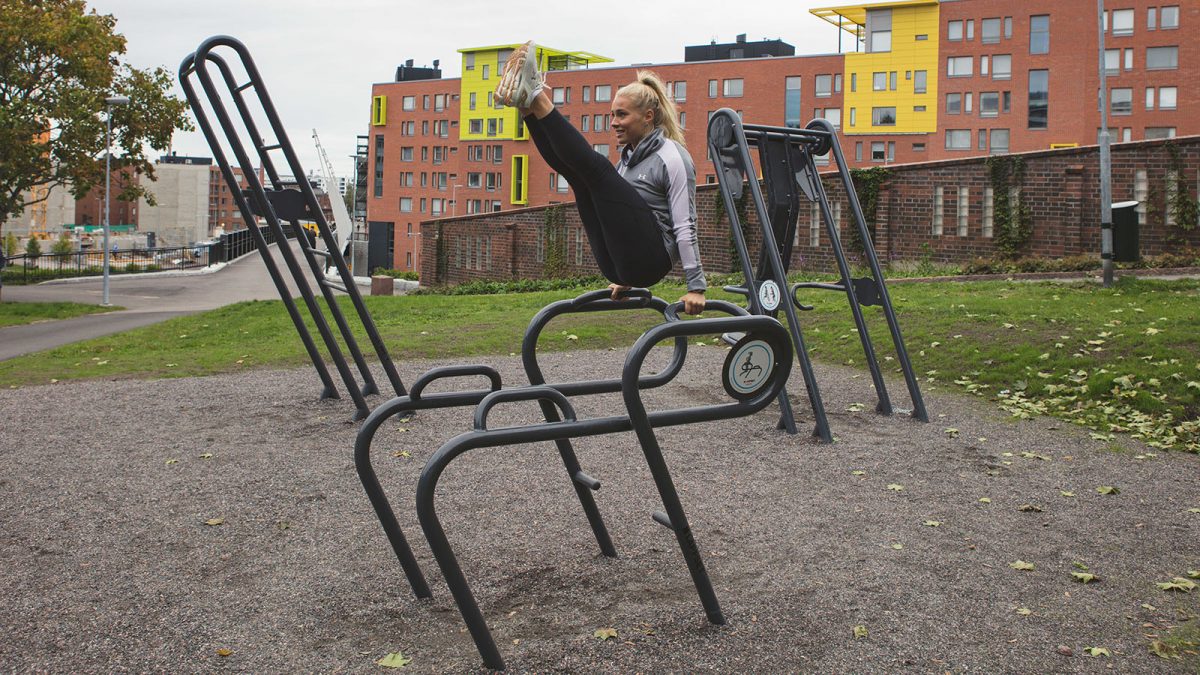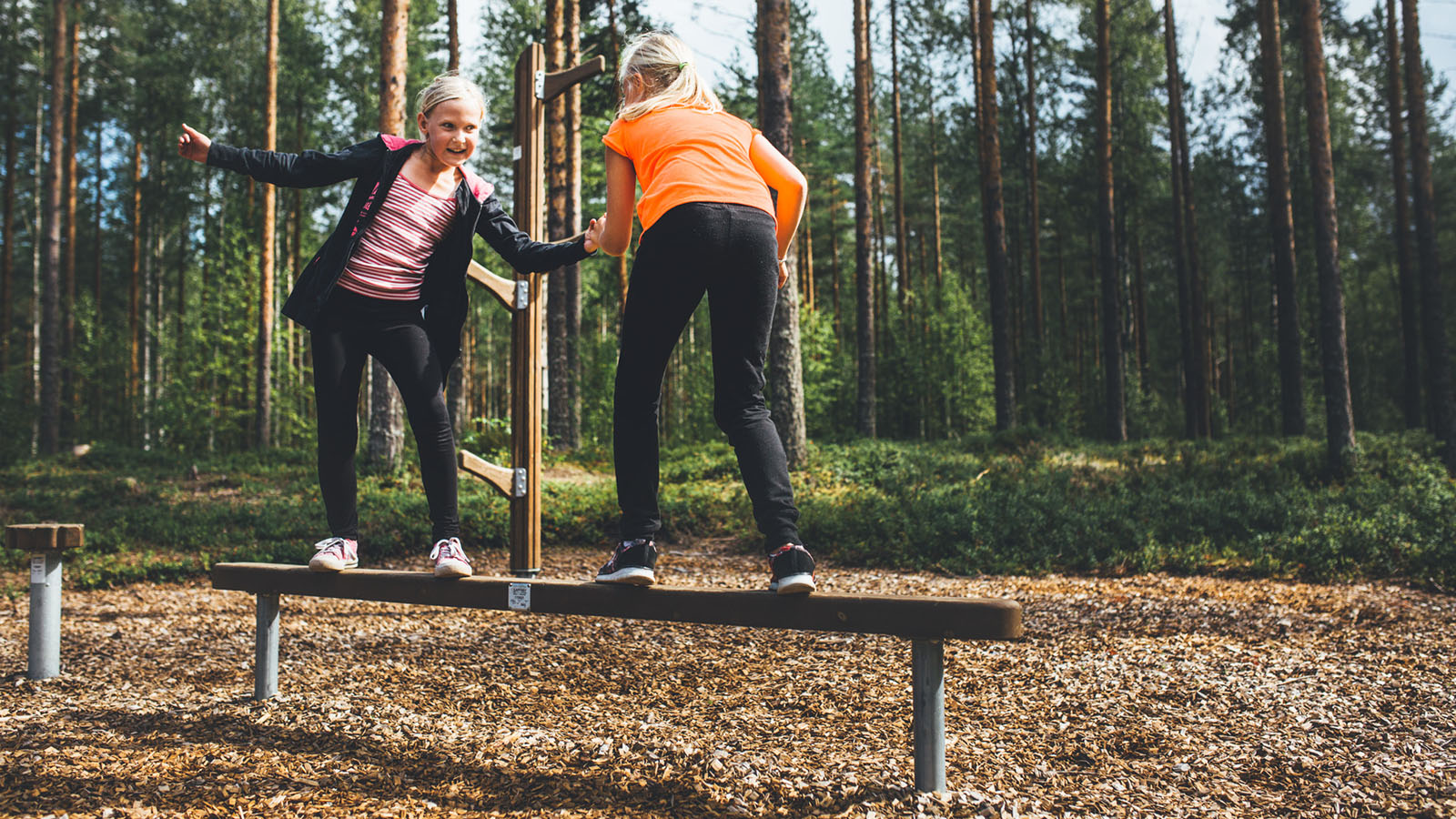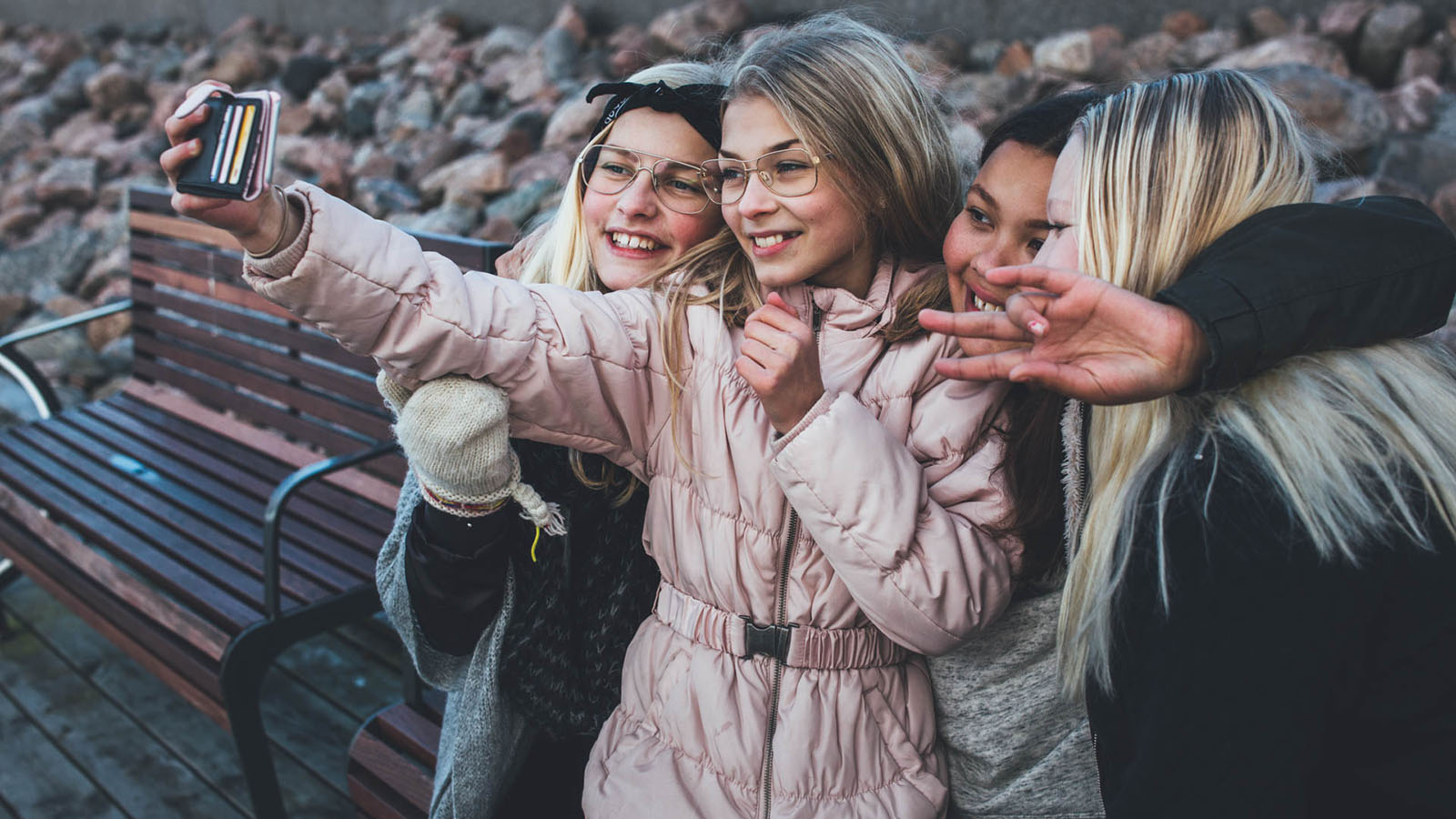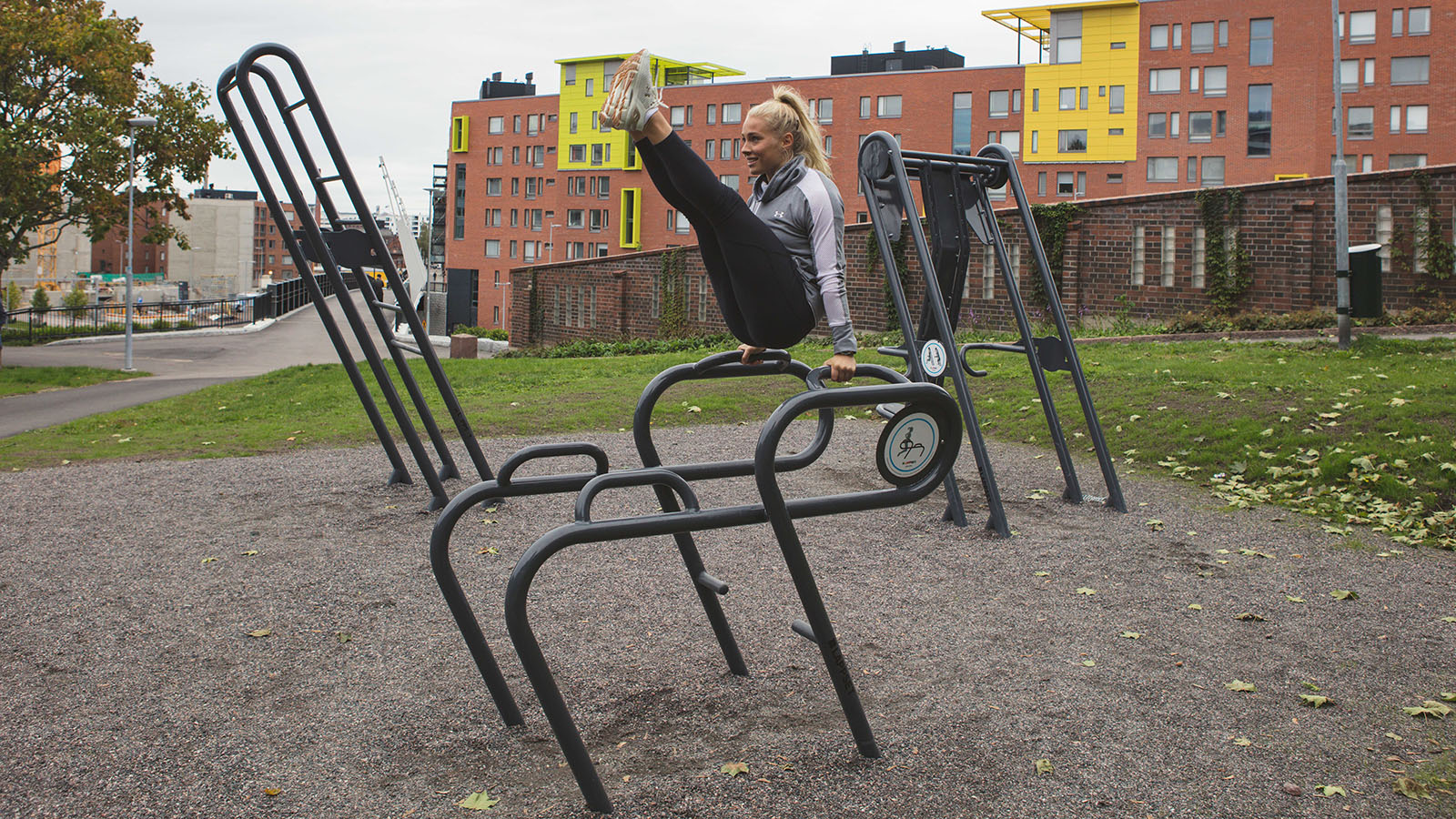GIRLY GIRLS AND DAREDEVILS
In this blog post, Elina Hasanen, researcher of sports sciences, discusses the spontaneous sports activities of girls. Typical girly sports activities do not fit a single mould. So who fits into sports facilities?
A young person of 14 is having the time of their life zooming down a skiing slope. Another youth of a similar age is pushing a bike up a huge hill, and when they reach the top, they fly down the other side. A third wants to see if they can swim from this side of the lake to the other. A fourth is trying to beat their friends at hitting the crossbar with a football. A fifth is exploring forest trails in the forest, alone, at night.DOES THIS SOUND GIRLY?
Girls that go zooming down hills, exploring and competing show that they are involved in a wide range of spontaneous sports activities. Girls have tricks that break the girly mould. The stories about girls in my study show that girly activities include climbing and racing downhill, as well as going for walks and dancing in their bedrooms.
At secondary school age, gender does not really determine what individuals seek to achieve through spontaneous sports activities. Young people are motivated by having fun, experiencing crazy things, spending time with friends and, sometimes, getting away from their parents. They may be motivated by physical fitness or skills, or by being able to move, being active and free, and choosing where to spend their time. This applies to all young people, regardless of gender.
However, when we examine the use of sports facilities, there are often significant differences between boys and girls. Who do you usually see on football pitches and basketball courts? What do you notice when looking at a beach? What about a skate park or parkour park? The popularity of many sports activities and facilities seems to be divided by gender.
Contents
Not a question of preference or personal choice
HOWEVER, THIS IS NOT ALWAYS A QUESTION of preference or personal choice. There may be a background factor that becomes visible in the stories of secondary school age girls, such as:
- “We could not go to the basketball court because older boys were playing there.”
- “We can dive off the jetty when the boys have finished; at the indoor pool, you have to wait forever in the diving area, because of boys.”
- “It might be fun to play ice-hockey in the ice rink, but it would be too embarrassing with all the boys there.”
- “The gym is for big, muscle-bound men.”
As you can see, gender may determine your place in the pecking order in sports facilities. When the court, jetty, rink or gym feels controlled by boys, this indicates that there are masculine spaces in sports facilities. In such spaces, masculinity confers power. It gives you the freedom to be active in your own way.
Cultural limits
IT IS GOOD TO IDENTIFY CULTURAL LIMITS and their effects on the environment of sports facilities. This is one way of starting to tear down boundaries, bit by bit. Slowly, other people in sports facilities can show what is acceptable at each facility. Can I have a go at trying that? You can form ties with sports and facilities if they feel like they are yours.
The goal should be equal sports facilities for all. With reference to this goal, I made a list of factors that have proven significant for girls. The list is based on my study and research by the Swedish researchers Malin Croner and Karin Book.
5+3tips on creating equal opportunities for physical activities
1. THE ELEMENTS IN THE FACILITY MUST BE APPROPRIATELY SIZED FOR GIRLS
For example, if a beach volley net or fitness equipment is of a height or size suitable for men, this tells girls that the place is intended for men.
2. USABILITY
This is increased by visible instructions: what can you do here and how to apply the instructions. This provides limits and encourages users to adapt the facilities for their own purposes.
3. SENSE OF SECURITY
This is provided by familiarity and a location close to residential areas. Locations we know from childhood remain important to us for long after; facilities that encourage physical activity should be introduced in such places.
4. OWN SPACE
Smaller, separate areas within a larger facility form places that we can use for our own activities.
5. LOCAL NATURAL ENVIRONMENTS
Natural environments are permissive; they are far from the standards and performance goals of formal sports facilities. Local natural environments are significant in a number of ways.
I will add three factors to the list with a wider perspective on equal opportunities in physical activities for young people:
6. Stretching the cultural limits is worthy of respect and approving glances. Conquering the threat of embarrassment is a major issue.
7. Things should be allowed, not just prohibited. Physical activity is allowed here, for everyone!
8. Ask. Do not assume that you know what being physically active or inactive involves nowadays.
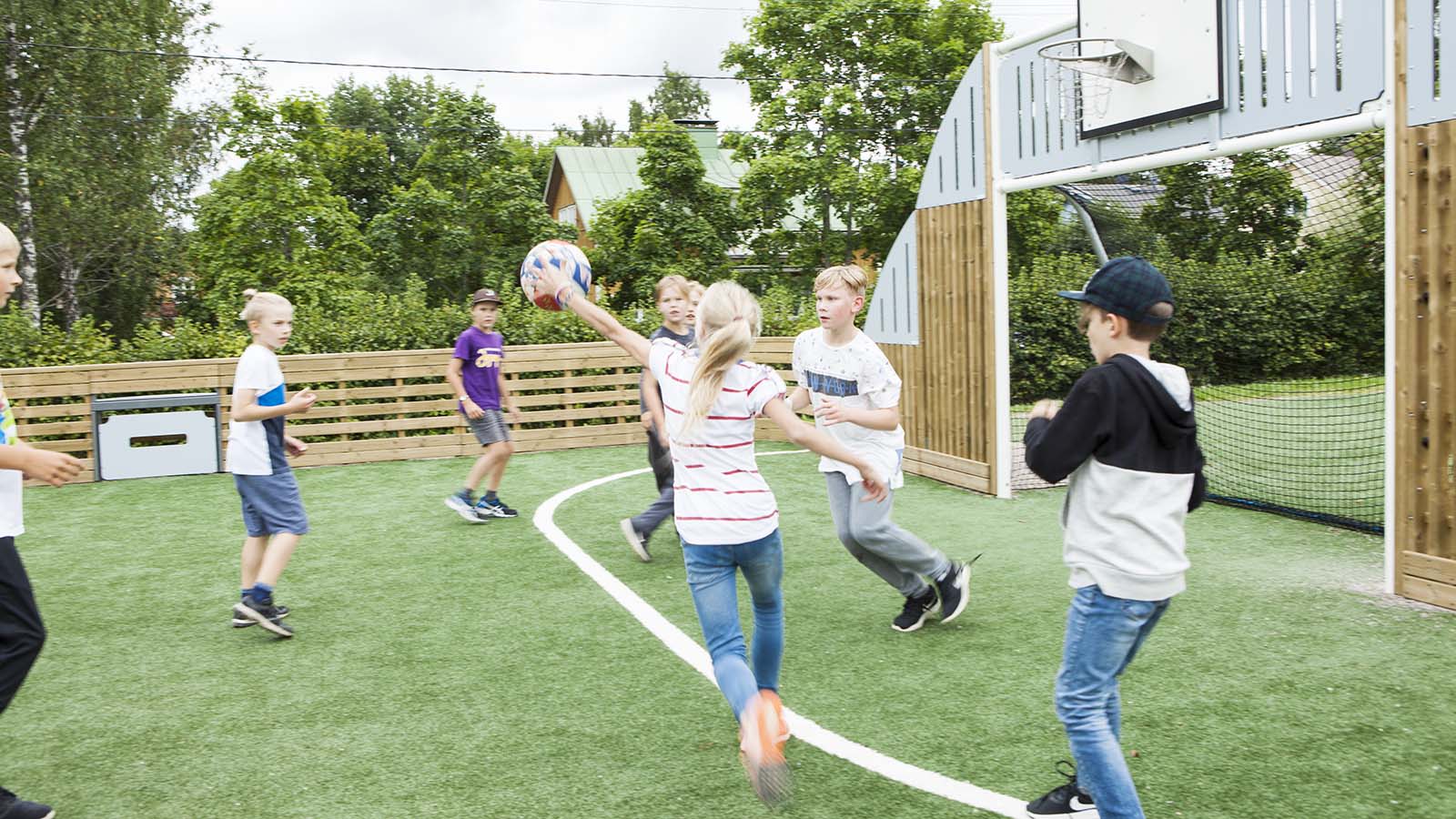
This blog post is mainly based on the author’s doctoral dissertation ”Me ollaan koko ajan liikkeessä – Tutkimus nuorten omaehtoisen liikkumisen muodoista ja merkityksistä tilan kehyksissä” (We’re on the move all the time. A study on the forms and meanings of young people’s self-organised physical activity in the framework of space). The dissertation is available (in Finnish) online.
Additional sources:
Croner, M. 2017. Tjejers villkor på spontanidrottsplatser. Hur man kan stimulera unga tjejers spontana fysiska aktivitet på en idrottsplats – en fallstudie om Alby Folkhälsopark. Alnarp: SLU, Department of Landscape Architecture, Planning and Management.

